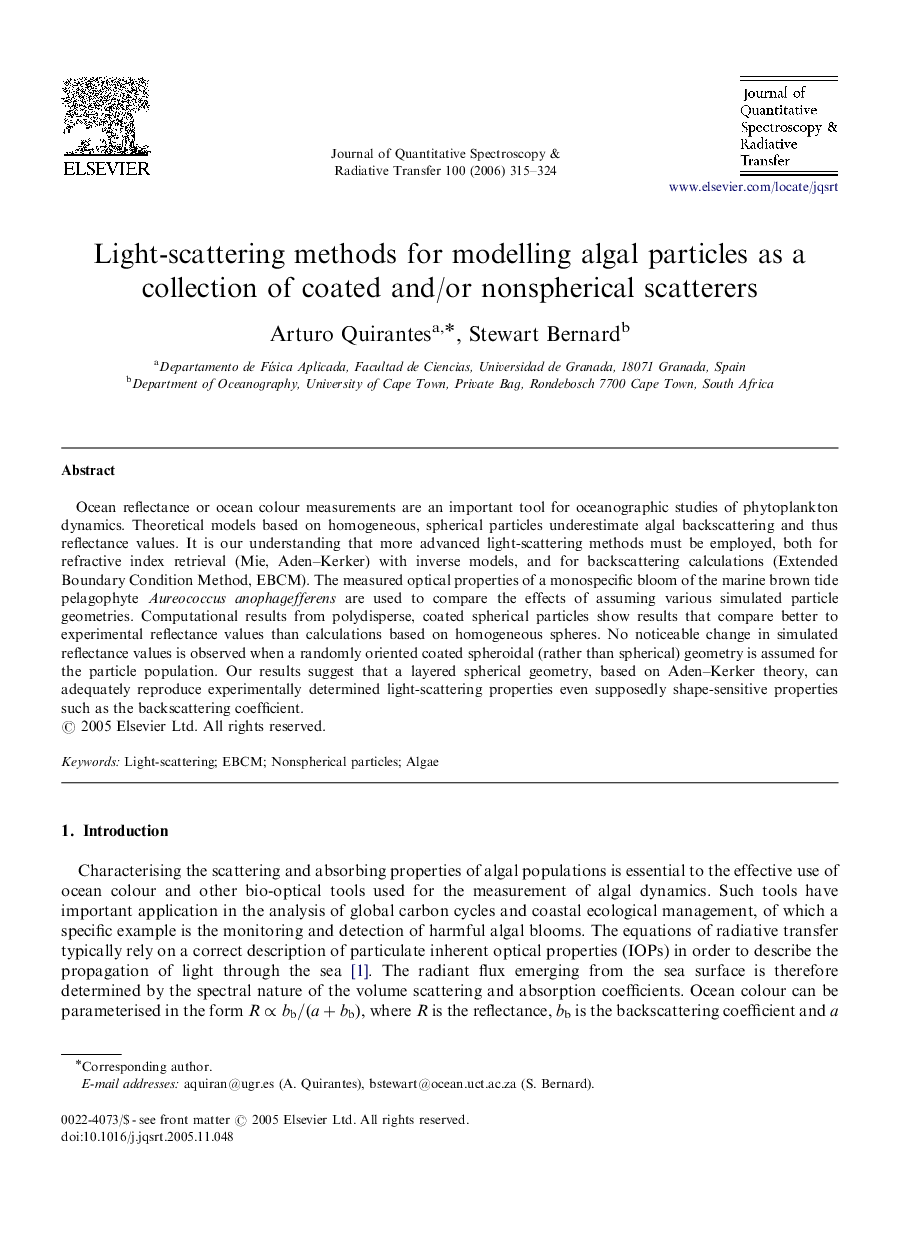| Article ID | Journal | Published Year | Pages | File Type |
|---|---|---|---|---|
| 5430660 | Journal of Quantitative Spectroscopy and Radiative Transfer | 2006 | 10 Pages |
Ocean reflectance or ocean colour measurements are an important tool for oceanographic studies of phytoplankton dynamics. Theoretical models based on homogeneous, spherical particles underestimate algal backscattering and thus reflectance values. It is our understanding that more advanced light-scattering methods must be employed, both for refractive index retrieval (Mie, Aden-Kerker) with inverse models, and for backscattering calculations (Extended Boundary Condition Method, EBCM). The measured optical properties of a monospecific bloom of the marine brown tide pelagophyte Aureococcus anophagefferens are used to compare the effects of assuming various simulated particle geometries. Computational results from polydisperse, coated spherical particles show results that compare better to experimental reflectance values than calculations based on homogeneous spheres. No noticeable change in simulated reflectance values is observed when a randomly oriented coated spheroidal (rather than spherical) geometry is assumed for the particle population. Our results suggest that a layered spherical geometry, based on Aden-Kerker theory, can adequately reproduce experimentally determined light-scattering properties even supposedly shape-sensitive properties such as the backscattering coefficient.
